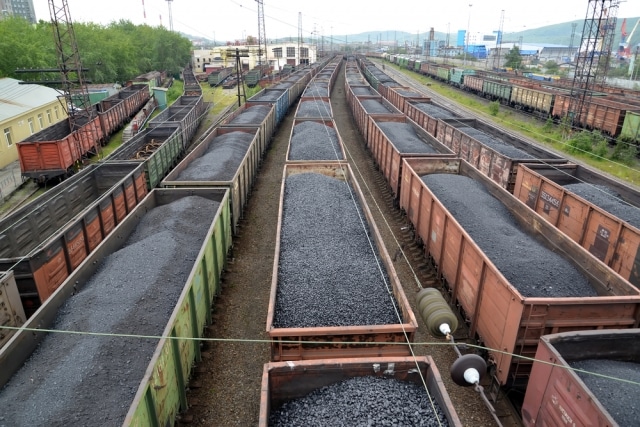This is a guest post by Emily Logan from Care2.
Coal produces 44 percent of our electricity, and it’s the biggest single cause of air pollution worldwide. Now that this is becoming common knowledge, the industry has tried to salvage their reputation with complex marketing tactics and the touting of new technologies. But the environmental impacts of coal continue to be devastating.
Here are ten of the worst environmental impacts of coal, and why “Clean Coal” is just an oxymoron.
1. Carbon Dioxide (CO2)
Coal burning is responsible for one third of America’s carbon dioxide emissions. This makes it the single biggest emitter of these deadly toxins, which are the primary cause of climate disruption. In 2011, coal plants in the U.S. emitted a total of 1.7 billion tons of CO2. Electricity generated by coal emits around 910 grams of CO2 per kilowatt hour, compared with 390g for gas generation, and nothing for renewable power.
2. Sulfur Dioxides (SO2)
Coal plants are also the leading source of SO2 pollution in the U.S. Sulfur dioxides causes acid rain, which means any precipitation (rain, snow, fog, or particles) that contain higher than normal amounts of sulfuric acid and nitric acid. Acid rain takes a major toll on public health, exacerbating asthma and making people more susceptible to chronic respiratory disease.
3. Nitrogen Oxides (NOx)
Along with sulfur dioxides, NOx pollution also forms acid rain when it enters the atmosphere and reacts with water, oxygen, or other chemicals. A typical uncontrolled coal plant emits 10,300 tons of NOx per year, and 18 percent of all NOx emissions in the U.S. come from coal-fired power plants.
4. Soot and Fly Ash
Particulate matter (also referred to as soot or fly ash), produced when coal is burned, has been linked to asthma, heart disease, emphysema and lung cancer. In fact, air pollution from coal-burning power plants causes an estimated 30,000 premature deaths a year in the U.S., which is more than drunken driving or homicides.
5. Toxic Mercury
When coal burns, it releases mercury, which falls to the earth, and eventually makes its way into water, contaminating fish. Humans become contaminated when we eat fish. Mercury is the most dangerous of the 67 air toxins emitted from coal-fired power plants; for pregnant women, it can cause brain damage, mental retardation, blindness, and numerous other problems in fetuses.
6. Solid Waste
Every year, the nation’s coal plants produce 140 million tons of coal ash or slurry, which ends up in open-air pits and surface-waste ponds. Toxic substances in the waste, including arsenic, mercury, chromium, and cadmium, can contaminate drinking water supplies and damage vital human organs. In 2000 and again in 2008, coal-slurry ponds in Kentucky and Tennessee burst, spilling more toxic waste than the Exxon-Valdez oil spill.
7. Cooling Water System
Coal plants typically withdraw water from nearby water bodies, such as lakes, rivers, or oceans, to create steam for turning their turbines. When water is pulled in, millions of fish eggs, fish larvae, and juvenile fish may also be sucked in and die. Once the 70 to 180 billion gallons of water have cycled through the power plant, they are released back into the water body. Since the released water is hotter than the receiving water by up to 20-25° F, “thermal pollution” is created, which can decrease fertility and increase heart rates in fish.
8. Mountaintop Removal (MTR)
Mountaintop removal devastates ecosystems. Mining companies clear cut forests to expose the tops of mountains, which are then blown off with explosives. They extract coal using large machinery and dump millions of tons of rubble and toxic waste into the streams and valleys below the mining sites. Mountaintop-removal mining has damaged or destroyed nearly 2,000 miles of streams and threatens to destroy 1.4 million acres of mountaintops and forests by 2020.
9. Underground Mining
Underground coal mining is a dirty and dangerous process for the environment and workers. On average, 50 to 60 coal miners die in the U.S. every year, in tragedies like the one that happened in West Virginia’s Upper Big Branch mine in 2010.
10. Clean Coal Is A Marketing Myth
The term “Clean Coal” refers to technologies that attempt to mitigate CO2 and other greenhouse gas emissions, but problems abound. First off, it’s incredibly expensive. Second, it produces other pollutants as a result that are difficult to store and manage—and whether it is actually feasible in the long term for these sequestered chemicals to remain in storage is not yet confirmed. Lastly, it doesn’t take into consideration the devastating effects of the coal extraction processes. In short, there is nothing clean about it.
Emily Logan is Director of Acquisition and Retention at Care2, where her team works with member activists to spread the word about their petitions, builds petition campaigns into full-scale organizing efforts, and helps keep current Care2 members happy and engaged. In her time at Care2 she has also worked extensively with hundreds of nonprofit organizations to help recruit activists and donors and build out their online strategies. Emily has a B.S. in journalism and a B.A. in music from Cal Poly, San Luis Obispo and currently lives in rainy Portland, Oregon with her cat Ostrich.
Subscribe to our newsletter
Stay up to date with DeSmog news and alerts






